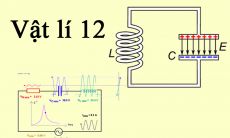Read the following passage and mark the letter A, B, C, or D on your answer sheet to indicate the correct answer to each of the questions from 35 to 40.
Often the craft worker’s place of employment in ancient Greece was set in rural isolation. Potter, for instance, found it convenient to locate their workshops near their source of clay, regardless of its relation to the center of settlement, At Corinth and Athens, however, two of the best-known potters’ quarters were situated on the cities’ outskirts, and potters and makers of terra-cotta figurines were also established well within the city of Athens itself. The techniques of pottery manufacture had evolved well before the Greek period, but marked stylistic developments occurred in shape and in decoration, for example, in the interplay of black and other glazes with the red surface of the fired pot. Athenian black-figure and red-figure decoration, which emphasized human figures rather than animal images, was adopted between 630 and 530 B.C.; its distinctive color and luster were the result of the skillful adjustments of the kiln’s temperature during an extended three-stage period if firing the clayware. Whether it was the potters or the vase-painters who initiated changes in firing is unclear; the functions of making and decorating were usually divided between them, but neither group can have been so specialized that they did not share in the concerns of the other.
The broad utility of terra-cotta was such that workers in clay could generally afford to confine themselves to either decorated housewares like cooking pots and jars or building materials like roof tiles and drainpipes. Some sixth-and fifth-century B.C. Athenian pottery establishments are known to have concentrated on a limited range of fine ware, but a rural pottery establishment on the island of Tliasos produced many types of pottery and roof tiles too, presumably to meet local demand. Molds were used to create particular effects for some products, such as relief-decorated vessels and figurines; for other products such as roof tiles, which were needed in some quantity, they were used to facilitate mass production. There were also a number of poor-quality figurines and painted pots produced in quantity by easy, inexpensive means- as numerous featureless statuettes and unattractive cases testify.
Câu 35 : The passage mainly discusses ancient Greek pottery and its __________ .
Hãy suy nghĩ và trả lời câu hỏi trước khi xem đáp án
Lời giải:
Báo saiBài đọc chủ yếu thảo luận đến việc làm gốm ở Hy Lạp cổ đại và ___________________ .
A. các kĩ thuật sản xuất
B. sự tương tự với các nghề thủ công khác
C. các chất liệu khác thường
D. sự giống với nghề làm đồ gốm trước đó
Dẫn chứng: ....The techniques of pottery manufacture had evolved well before the Greek period, but marked stylistic developments occurred in shape and in decoration, for example, in the interplay of black and other glazes with the red surface of the fired pot...
(...Các kĩ thuật sản xuất gốm đã phát triển mạnh trước thời kì Hy Lạp, nhưng sự phát triển nghệ thuật đáng chú ý đã xuất hiện trong hình dạng và trang trí, ví dụ trong sự tương tác giữa màu đen và các men khác với bề mặt màu đỏ của nồi nung...)
Chọn A
Câu 36 : It can be inferred from the passage that most pottery establishments in ancient Greece were situated ___________ .
Hãy suy nghĩ và trả lời câu hỏi trước khi xem đáp án
Lời giải:
Báo saiChúng ta có thể suy ra từ bài đọc rằng hầu hết các cơ sở sản xuất gốm ở Hy Lạp cổ đại được đặt _____ .
A. ở trung tâm thành phố
B. ở các vùng ngoại ô của thành phố
C. ở nơi có thể tìm thấy đất sét
D. ở gần các xưởng gốm khác
Dẫn chứng: Potter, for instance, found it convenient to locate their workshops near their source of clay, regardless of its relation to the center of settlement...
(Chẳng hạn, các thợ làm gốm thấy thuận tiện khi đặt xưởng gốm ở gần nguồn đất sét, mà không quan tâm đến việc nó có gần khu đông dân cư không...)
Chọn C
Câu 37 : The word “marked” in the first paragraph is closest in meaning to __________
Hãy suy nghĩ và trả lời câu hỏi trước khi xem đáp án
Lời giải:
Báo saiTừ “marked” trong đoạn đầu gần nghĩa nhất với ___________________
A. thuộc nguồn gốc
B. hấp dẫn, lôi cuốn
C. đáng chú ý
D. được trang trí bằng mẫu vẽ
Do đó: marked = noticeable: đáng chú ý, có thể nhận thấy
Chọn C
Câu 38 : The word “confine” in the second paragraph is closest in meaning to _________ .
Hãy suy nghĩ và trả lời câu hỏi trước khi xem đáp án
Lời giải:
Báo saiTừ “confine” trong đoạn 2 gần nghĩa nhất với ___________________ .
A. thích nghi
B. huấn luyện, đào tạo
C. hạn chế
D. tổ chức
Do đó: confine = restrict: giới hạn, hạn chế
Chọn C
Câu 39 : It can be inferred from the passage that terra-cotta had which of the following advantages?
Hãy suy nghĩ và trả lời câu hỏi trước khi xem đáp án
Lời giải:
Báo saiChúng ta có thể suy ra từ bài đọc rằng đất nung có những lợi ích nào sau đây?
A. Nó không bị vỡ suốt quá trình nung
B. Nó rẻ hơn các vật liệu có sẵn khác
C. Bề mặt của nó sáng bóng lâu
D. Nó có thể được sử dụng cho nhiều mục đích
Dẫn chứng: “The broad utility of terra-cotta was such that workers in clay could generally afford to confine themselves to either decorated housewares like cooking pots and jars or building materials like roof tiles and drainpipes"
(Ứng dụng của đất nung là rất rộng nên các công nhân có thể tự giới hạn mình với các đồ dùng gia đình trang trí như nồi nấu ăn và chum dự trữ hoặc vật liệu xây dựng như ngói và ống thoát nước.)
Chọn D
Câu 40 : The word “presumably” in the second paragraph is closest in meaning to ____________
Hãy suy nghĩ và trả lời câu hỏi trước khi xem đáp án
Lời giải:
Báo saiTừ “presumably” trong đoạn 2 gần nghĩa nhất với từ ___________________
A. thường xuyên
B. thiết thực, thực tế
C. yêu thích
D. có thể, có lẽ
Do đó: presumably = probably: có lẽ, có thể
Chọn D
Đề thi giữa HK1 môn Tiếng Anh 10 Cánh diều năm 2023-2024
Trường THPT Nguyễn Thị Minh Khai














